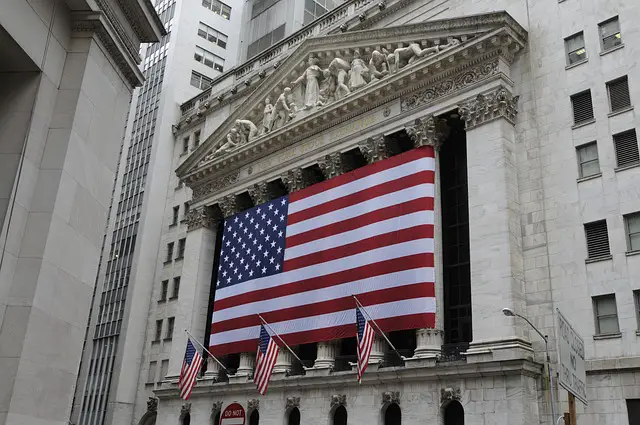What is the NYSE?

What is the NYSE? The NYSE, or New York Stock Exchange, is one of the largest stock exchanges in the world, based in New York City. It was founded in 1792 and has since become the largest equities-based exchange in the world by market capitalization of its listed companies. Companies listed on the NYSE are considered to be some of the largest and most well-established in the world. Trading on the NYSE involves the buying and selling of stocks and other securities by investors and traders, and it is a key driver of the global financial markets.
How Does the NYSE Work?
The NYSE or New York Stock Exchange operates as a market where stocks and other securities are bought and sold. It serves as a centralized location where buyers and sellers of securities can come together to trade. The NYSE sets the rules and regulations for trading and provides a platform for the buying and selling of securities.
When a company wants to list its shares on the NYSE, it must meet certain requirements, such as a minimum level of market capitalization, a certain number of publicly traded shares, and a minimum level of earnings. Once a company is listed, its shares can be bought and sold on the exchange by individual investors, institutional investors, and traders.
The NYSE uses an auction-style system for trading, where buyers and sellers submit bids and offers for securities at different prices. When a buyer and seller agree on a price, the trade is executed and the buyer takes ownership of the shares.
The NYSE also provides information and tools for investors, such as real-time quotes, market data, and financial news. The exchange plays an important role in the functioning of the global financial markets and helps to facilitate the flow of capital to companies, allowing them to grow and create new jobs.
History of the NYSE
The New York Stock Exchange (NYSE) has a long and rich history that dates back to 1792. It was founded by a group of twenty-four brokers and merchants who signed the Buttonwood Agreement on May 8, 1792, which established the rules for trading securities in the city. The NYSE officially opened for business on March 8, 1817, and quickly became one of the most important financial centers in the world.
Throughout the 19th and early 20th centuries, the NYSE continued to grow and expand its operations, serving as a marketplace for both U.S. and international securities. In the late 1800s, the NYSE faced increased competition from other exchanges, leading to a consolidation of the industry. In 1906, the NYSE became a self-regulating organization and was granted the power to set standards for listing and trading securities.
In the mid-20th century, the NYSE faced new challenges as new forms of trading, such as electronic trading and alternative exchanges, emerged. However, it was able to adapt and evolve, remaining one of the most important financial institutions in the world. Today, the NYSE is a global exchange that lists a wide variety of securities, including stocks, bonds, exchange-traded funds (ETFs), and more. The exchange remains at the forefront of the global financial markets and continues to play a vital role in the world economy.
What’s the Difference Between the NYSE and the Nasdaq?
The New York Stock Exchange (NYSE) and the NASDAQ are two of the largest stock exchanges in the world, but there are some differences between the two.
- The NYSE primarily trades in traditional blue-chip stocks, while the NASDAQ is known for its technology-focused listings, including many of the world’s largest tech companies.
- The NYSE uses an auction-style trading system where buyers and sellers come together to execute trades, while the NASDAQ uses a market maker system, where a network of firms act as intermediaries between buyers and sellers.
- The NYSE has more stringent listing requirements, including a higher market capitalization requirement and higher fees, while the NASDAQ has lower requirements and fees, making it a popular choice for younger and smaller companies.
- The NYSE has a larger market capitalization than the NASDAQ, but the NASDAQ has a higher number of listed companies.
Overall, the NYSE and NASDAQ serve different segments of the market and provide investors with a choice of trading venues for different types of securities. Both exchanges play an important role in the functioning of the global financial markets and offer unique advantages to investors.
How to Get Listed on the NYSE?
Getting a company listed on the New York Stock Exchange (NYSE) is a complex process that requires careful planning and preparation. Here are the steps to follow in order to get your company listed on the NYSE:
- Hire Advisors: You will need to engage the services of a securities attorney, an investment banker, and a financial advisor to help you prepare your company for listing.
- Meet Listing Requirements: The NYSE has strict listing requirements that your company must meet in order to be listed on the exchange. These requirements include a minimum market capitalization, minimum share price, minimum public float, minimum stockholder equity, and minimum operating history.
- Prepare Financial Statements: Your company will need to provide audited financial statements for the past three years, as well as projections for the next two years.
- Submit an Application: Once you have met the NYSE’s listing requirements and prepared your financial statements, you will need to submit an application to the exchange. The application should include detailed information about your company’s business, management, and finances.
- Complete the Review Process: The NYSE will review your application and perform due diligence to determine if your company is suitable for listing on the exchange. This process can take several months and may involve additional requirements or conditions that your company must meet.
- Launch an IPO: Once your company has been approved for listing, you will need to launch an initial public offering (IPO) to raise capital and provide a market for your company’s shares. This process involves working with investment bankers to price your shares, market the offering, and sell the shares to the public.
Getting a company listed on the NYSE is a significant accomplishment that requires a significant investment of time and resources. However, it can provide a valuable source of capital, increased visibility, and improved liquidity for your company’s shares.
What Are the NYSE Listing Requirements?
The NYSE has several listing requirements that companies must meet in order to have their shares traded on the exchange. Some of the key requirements include:
- Market Capitalization: Companies must have a minimum market capitalization of $100 million.
- Share Price: Companies must maintain a minimum share price of $4.00 per share.
- Publicly Held Shares: Companies must have a minimum public float, which is the number of shares available for public trading, of 1.1 million shares
- Shareholders: 400 round lot
- Shareholders Equity: Companies must have a minimum of $60 million of stockholder equity.
- Operating History: Companies must have a minimum operating history of three years.
- Earnings: Companies must have a minimum level of earnings, which is determined by the NYSE on a case-by-case basis.
- Disclosure and Reporting: Companies must comply with NYSE and SEC reporting and disclosure requirements.
These requirements are in place to ensure that the companies listed on the NYSE are financially stable and transparent and that they have a track record of success. Companies that do not meet these requirements may still be able to list on other exchanges, such as the NASDAQ. The NYSE regularly reviews and updates its listing requirements to ensure that they remain relevant and appropriate for the evolving financial markets.
How Companies Can Avoid Delisting on the NYSE?
Companies can avoid being delisted from the NYSE by meeting and maintaining the following requirements:
- Companies MUST meet financial and operational requirements, such as maintaining a positive net income and market capitalization.
- Companies MUST comply with NYSE’s corporate governance standards.
- Companies MUST meet reporting requirements by filing periodic reports with the SEC and NYSE in a timely manner.
- Companies MUST keep shareholders informed by regularly communicating company performance and outlook.
- Companies MUST take prompt action to address any compliance issues that arise.
- Companies MUST stay transparent with the NYSE and regularly engage with them to address any concerns or questions they may have.
- Companies MUST have contingency plans in place to address any unexpected financial or operational challenges.
- Companies MUST maintain a minimum $1.00 per share listing on the New York Stock Exchange (NYSE). If a company’s stock price falls below $1.00 for 30 consecutive trading days, the NYSE may commence proceedings to delist the company. The NYSE may grant an exception or extension for companies that can demonstrate a sustained recovery plan and increased investor interest in the stock.
By following these guidelines, companies can help ensure they remain in compliance with NYSE’s listing requirements and avoid delisting.
How to Contact the NYSE?
You can contact the New York Stock Exchange (NYSE) in several ways:
- Website: Visit the NYSE website at www.nyse.com and use the “Contact Us” page to submit a question or request.
- Phone: Call the NYSE’s customer service hotline at (212) 656-3000 or (212) 896-2830
- Email: Send an email to info@nyse.com with your question or request.
- Mail: Send a letter to the NYSE’s headquarters at:
New York Stock Exchange 11 Wall Street New York, NY 10005 USA
- Social Media: You can also reach out to the NYSE through its social media accounts, including Twitter and LinkedIn.
Regardless of the method you choose, the NYSE’s customer service team is available to answer questions and provide information to help you understand how the exchange operates and how you can participate in the markets.


